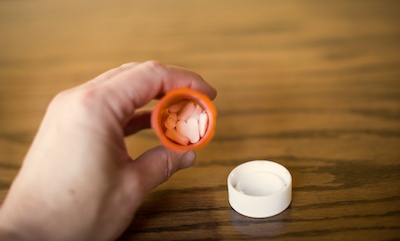Instead of Opioid Detox ‘Revolving Door,’ a ‘Bridge’ to Long-Term Treatment.
 Three out of four people who complete an inpatient opioid withdrawal management program—commonly known as “detox”—relapse within a month, leading to what some opioid use disorder researchers describe as a “revolving door.” Few successfully transition to long-term treatment with proven medications such as buprenorphine, methadone, or naltrexone to prevent overdose.
Three out of four people who complete an inpatient opioid withdrawal management program—commonly known as “detox”—relapse within a month, leading to what some opioid use disorder researchers describe as a “revolving door.” Few successfully transition to long-term treatment with proven medications such as buprenorphine, methadone, or naltrexone to prevent overdose.
Starting patients on long-term, primary care-based buprenorphine treatment while in detox would be more effective than simply offering a referral for such treatment as they leave detox, according to a new study led by a School of Public Health researcher.
Published in the journal Addiction, this is the first randomized trial comparing the two strategies. Patients who started buprenorphine treatment at the detox program were less likely to use opioids illicitly over the following six months, and more likely to keep up treatment.
“The idea of detox—getting inpatient treatment for a few days and expecting to quit opioids—has always been magical thinking,” says study lead author Michael Stein, professor and chair of health law, policy & management. “We’ve quantified here for the first time how successful we can be if we use short-term inpatient programs as starting grounds for long-term treatment.”
Buprenorphine, itself a lower-risk opioid, has been shown to significantly reduce the odds of overdose among people with opioid use disorder. Physicians have to be specially licensed to prescribe buprenorphine, and a patient has to go through several steps to start outpatient treatment with the medication—an onerous process that keeps patients from accessing life-saving medication, according to a recent editorial that Stein co-authored in JAMA calling for making emergency buprenorphine doses available over the counter.
Detox programs also use buprenorphine or methadone to manage withdrawal, but taper off the medication over the course of a five- to seven-day program.
For the study, Stein and his colleagues tested a system of buprenorphine initiation and continuation at the Stanley Street Treatment and Resources program (SSTAR) in Fall River, Mass. In the study, 56 people in the detox program received the typical first-day buprenorphine treatment, then went on to a daily dose of buprenorphine. When they were discharged from the short-term program, these 56 people were already established as patients at SSTAR’s nearby primary healthcare center, with an outpatient appointment for the following week and a prescription to be able to continue taking their daily dose of buprenorphine until then. The researchers called this strategy of “bridging” short-term and long-term care the Linkage system, or LINK.
For comparison, another 59 patients went through a standard short-term, inpatient managed withdrawal program with buprenorphine, in which they tapered off buprenorphine over six days. At discharge, these patients received a full list of local substance use treatment options as well as primary medical care follow-up options, including at the nearby outpatient SSTAR health center, but were not guaranteed an appointment.
Among the LINK participants, 75.6, 65.9, 48.9 and 35.9 percent reported taking buprenorphine daily at two weeks, one month, three months, and six months after discharge, respectively. Among the standard care group, 14.7, 15.2, 18.2 and 10.0 percent reported daily buprenorphine at the same follow-up times, respectively.
This greater buprenorphine use resulted in an average of four or five fewer days of illicit opioid use per month in the LINK group than in the other group, “thereby lowering the overdose risk that comes from use of fentanyl and other lethal opioids,” Stein says.
“We’ve shown that most patients can successfully link to care after detox if the referral process is seamless. But these same patients continue to struggle with addiction as time goes on, often leaving buprenorphine treatment over the next six months,” he says.
“This is the next frontier of care: figuring out ways to help patients sustain treatment.”
The study was co-authored by Micah Conti and Bradley Anderson of Butler Hospital in Providence, R.I.; Genie Bailey of SSTAR and the Warren Alpert Medical School of Brown University; and Debra Herman of Butler Hospital and the Warren Alpert Medical School.